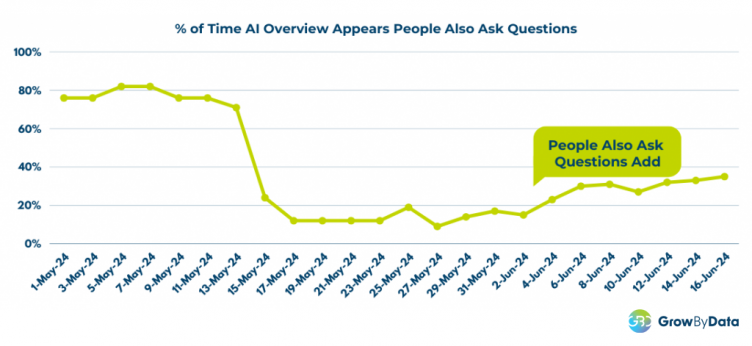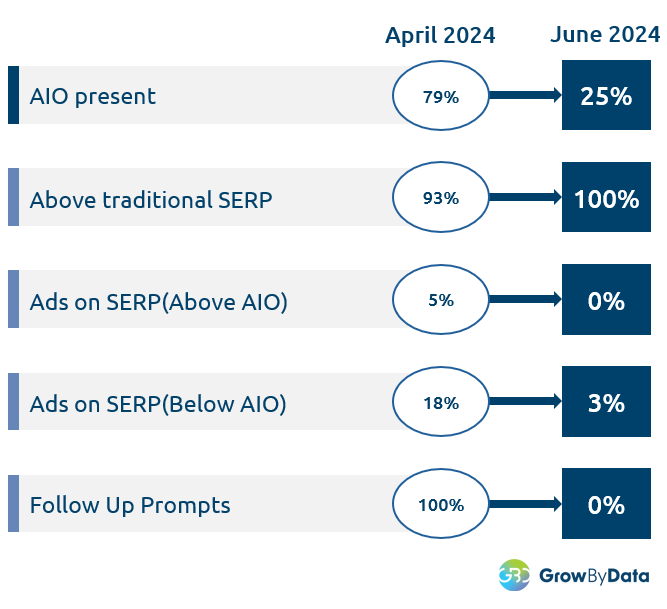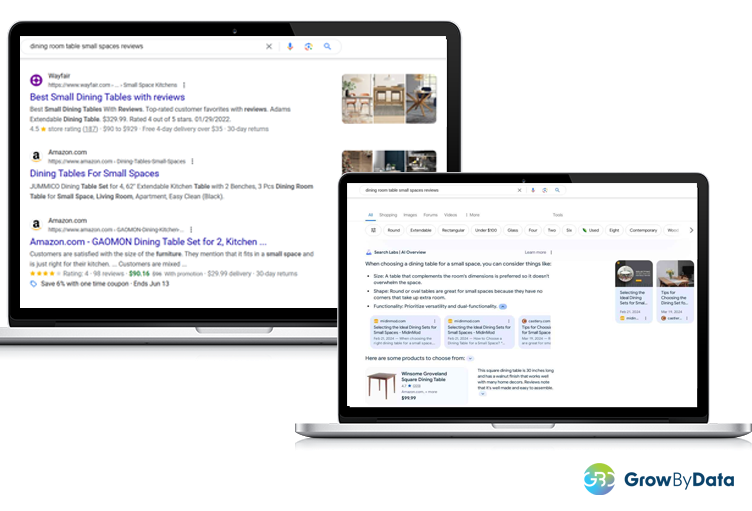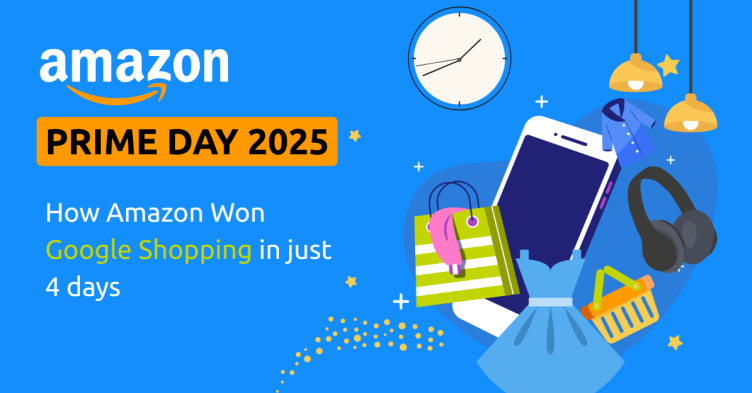The world of Search is undergoing a transformative shift as traditional keyword strategies lose relevance in today’s digital landscape. This evolution is driven by Google’s AI-powered search results, prioritizing informative content and complex user queries. Publishers are capitalizing on this shift, outperforming retailers and brands in product visibility.
→ Learn more about how to monitor Google AI Overviews
This blog explores key insights from recent developments, highlighting effective search strategies for this new era. We’ll illustrate these shifts with specific examples. We will illustrate these shifts with specific examples.
For a comprehensive understanding, we are featuring a new case study on the furniture category, although our monitoring spans various sectors, including B2B, financial services, and healthcare. This approach provides you with in-depth insights into link display and product visibility, offering a clear and detailed picture of what’s happening with well-known brands.
Google’s Evolving Search Results
Google is now prioritizing summary content to help users quickly understand topics. Initially, there were concerns that these summaries would lack links, but Google has confirmed that links will still be included, albeit fewer in number. Sundar Pichai mentioned that these links have a higher click-through rate than traditional links, although the exact numbers remain undisclosed.

The Impact on Product Visibility
The landscape of product display in Google search results is also changing. There are three primary product layouts, varying by category and subcategory. For instance, the product carousel is specific to the fashion category, while product grids are becoming dominant in furniture displays. The tabbed feature allows users to navigate through products easily, a trend not limited to furniture but prevalent across various sectors.
Rapid Changes and Local Results
In our monitoring, we’ve observed rapid changes since the Google I/O event on May 14th, where AI results were rolled out to the public. One significant change is the movement of local packs outside of AI results, now only appearing in traditional results unless a “near me” keyword is used.

Decline in Traditional Keywords
Since the public rollout of AI results, AI-drive search results have declined by about 10% for traditional keywords; complex questions generate AI-driven search results (ASR) at a much higher rate. Experimentation with “people also ask” questions related to our traditional keywords has shown a significant uptick in relevant results.

Monitoring the Changing Landscape

We have observed that AI results appear approximately 25% of the time on average, consistently above traditional results. Paid Ads, previously displayed above and below search results, now only appear below. Interestingly, there is a significant reduction in product visibility under these AI results, primarily limited to sponsored products or shopping carousels.

Democratization of Product Visibility
The shift in market dynamics, particularly the democratization of product visibility, is a significant trend in the furniture category. This trend is not just about the established players. New entrants like All Modern and Burrow are also making their mark, demonstrating the potential for disruption in the market. For instance, while Amazon previously dominated with a 23% share of voice in merchant listings, its visibility has now decreased. In contrast, retailers like Wayfair have experienced a notable increase, moving from 7th to 1st place.

How To Win in The New Landscape?
To thrive in this rapidly evolving landscape, it’s essential to:
- Monitor Continuously: Stay updated with the changing dynamics.
- Redefine Keyword Research: Adapt to new methods that focus on complex questions and user intent.
- Conduct Competitive Analysis: Understand why some retailers succeed over others by deconstructing content strategies.
- Experiment and Track: Implement changes and monitor their impact regularly.
How Can GrowByData Help?
At GrowByData, we’ve been leading the way in Google AI Overview since it began. We provide valuable insights to help brands and agencies thrive in the evolving search landscape. Our detailed data and analysis can reveal the factors affecting your Google AIO performance and suggest actionable steps. We’ll collaborate with you to enhance your brand’s visibility through a tailored search strategy. Our reports include detailed screenshots and analysis to support informed decision-making. We’re excited about these changes and ready to discuss your specific needs, answer questions, and explore how we can help you navigate the new era of search marketing.



